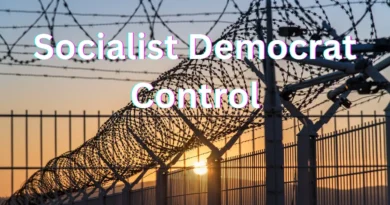Why Animal Abuse Poses a Threat To People
The Dangerous Link Between Animal Cruelty and Violence Against Humans: Understanding the Risks and Solutions
Why Animal Abuse Poses a Threat To People. Animal cruelty, particularly in its most extreme forms—torture and killing—presents a grave concern not only for the welfare of animals but also for society at large. The act of deliberately harming animals is not merely an isolated issue of cruelty; it is often a red flag indicating deeper psychological problems that can escalate into violence against humans. This connection between animal abuse and human violence has been well-documented, making it crucial for society to recognize, address, and prevent animal cruelty as part of a broader strategy to protect both animals and people.
Table of Contents
The Psychological Roots of Animal Cruelty
To understand why individuals who harm animals pose a danger to society, it is essential to delve into the psychological factors that drive such behavior. Several key aspects contribute to the development of cruelty towards animals, many of which are closely linked to behaviors that can later manifest in violence against humans.
- Lack of Empathy: Empathy is the ability to understand and share the feelings of another being. Individuals who torture or kill animals often exhibit a profound lack of empathy. This absence of concern for the suffering of others is a hallmark of several personality disorders, including antisocial personality disorder (ASPD). People with ASPD may exhibit a pattern of disregard for the rights and well-being of others, and cruelty to animals can be an early indicator of this disorder. When empathy is lacking, it becomes easier for an individual to inflict harm without guilt or remorse, making them more likely to commit acts of violence against humans.
- Desensitization to Suffering: Repeated acts of animal cruelty can lead to desensitization, where the individual becomes increasingly numb to the suffering of others. This desensitization can extend beyond animals to humans, particularly vulnerable populations such as children, the elderly, or those with disabilities. As the perpetrator becomes more comfortable with causing pain, the threshold for what they consider acceptable behavior may lower, potentially leading to more severe acts of violence.
- Control and Power Dynamics: Animal cruelty can be a way for individuals to exert control and power over a helpless being. This desire for dominance can escalate over time, leading the individual to seek out more challenging or ‘satisfying’ targets, such as people. This pattern is particularly evident in cases of domestic violence, where the abuser may start by harming pets before moving on to family members.
- Early Exposure to Violence: Many individuals who engage in animal cruelty have themselves been victims of abuse or have witnessed violence at a young age. This early exposure can normalize violent behavior, making it more likely that the individual will perpetuate the cycle of violence. In some cases, harming animals may be a way for the individual to cope with their trauma or express their anger and frustration.
The Connection Between Animal Cruelty and Human Violence
Why Animal Abuse Poses a Threat To People. The link between animal cruelty and human violence is not just theoretical; it is supported by a growing body of research. Studies have shown that individuals who commit acts of animal cruelty are more likely to engage in violent behavior toward humans. This connection is so strong that animal cruelty is often used as a diagnostic tool for assessing the potential for future violence.
- The “Violence Graduation Hypothesis”: One prominent theory explaining the connection between animal cruelty and human violence is the “violence graduation hypothesis.” This hypothesis suggests that individuals who commit acts of violence against animals may gradually progress to committing acts of violence against humans. This progression occurs as the individual becomes desensitized to the suffering of others and seeks out greater challenges to satisfy their need for power and control.
- Serial Killers and Animal Cruelty: Some of the most notorious serial killers in history have been found to have a history of animal cruelty. For example, Jeffrey Dahmer, Ted Bundy, and the “Boston Strangler” Albert DeSalvo all exhibited a pattern of harming animals before turning their violence toward humans. While not every person who harms animals will become a serial killer, the presence of animal cruelty in a person’s history is a significant red flag that should not be ignored.
- Domestic Violence and Animal Abuse: In cases of domestic violence, animal abuse is often a precursor or concurrent behavior. Abusers may harm pets as a way to intimidate and control their victims. Studies have found that in households where domestic violence occurs, pets are often at risk of being harmed as well. This intersection of animal cruelty and domestic violence highlights the need for a comprehensive approach to addressing both issues simultaneously.
Society’s Role in Combating Animal Cruelty and Preventing Violence
Why Animal Abuse Poses a Threat To People. Given the clear connection between animal cruelty and violence against humans, it is imperative that society takes a proactive approach to combatting this issue. Addressing animal cruelty is not only about protecting animals but also about preventing the potential escalation of violence within our communities. Here are some key strategies that can help reduce animal cruelty and its associated risks.
- Strengthening Legal Protections for Animals: Laws against animal cruelty must be robust and consistently enforced. Strong legal protections for animals send a clear message that cruelty will not be tolerated and that such behavior has serious consequences. Penalties for animal cruelty should be significant and include not only fines and imprisonment but also mandatory psychological evaluation and treatment for offenders. In addition, legal frameworks should recognize the link between animal cruelty and human violence, allowing for cross-reporting between animal welfare agencies and law enforcement.
- Early Intervention and Education: Preventing animal cruelty begins with education. Schools and community organizations should provide education on the importance of treating animals with kindness and respect. Teaching empathy and compassion from a young age can help prevent the development of cruel behavior. Additionally, early intervention programs that identify at-risk individuals—such as children who exhibit signs of cruelty to animals—can provide the support and guidance needed to address underlying issues before they escalate.
- Providing Mental Health Support: Individuals who harm animals often have underlying psychological issues that require attention. Providing access to mental health services, including counseling and therapy, can help address these issues and reduce the risk of future violence. Mental health professionals should be trained to recognize the signs of animal cruelty as a potential indicator of broader behavioral problems, and treatment plans should be tailored to address these concerns.
- Raising Public Awareness: Public awareness campaigns can play a crucial role in preventing animal cruelty. By educating the public about the link between animal cruelty and human violence, communities can become more vigilant in identifying and reporting instances of cruelty. Encouraging people to report animal abuse can lead to early intervention and potentially prevent more serious crimes. Public awareness efforts should also highlight the importance of adopting pets from shelters and providing them with loving homes, which can reduce the incidence of animal abandonment and neglect.
- Collaboration Between Agencies: A coordinated approach between law enforcement, animal welfare organizations, and mental health services is essential for effectively addressing animal cruelty. These agencies should work together to share information, identify at-risk individuals, and provide comprehensive support. For example, law enforcement officers responding to domestic violence calls should be trained to recognize signs of animal abuse and collaborate with animal welfare agencies to ensure the safety of pets. Similarly, animal welfare organizations should be equipped to report suspected cases of human violence to the appropriate authorities.
- Supporting Animal Welfare Organizations: Animal welfare organizations play a crucial role in protecting animals from cruelty and abuse. These organizations provide shelter, care, and rehabilitation for animals that have been harmed, as well as advocate for stronger legal protections. Supporting these organizations through donations, volunteering, and advocacy can help ensure that they have the resources needed to continue their vital work. Additionally, partnerships between animal welfare organizations and mental health services can provide a holistic approach to addressing the root causes of animal cruelty.
Why Animal Abuse Poses a Threat To People
Conclusion
Why Animal Abuse Poses a Threat To People. The connection between animal cruelty and violence against humans is a serious issue that society cannot afford to ignore. Individuals who harm animals, especially those who torture or kill them, often exhibit behaviors that can escalate into violence against people. Recognizing the psychological factors that drive animal cruelty, such as a lack of empathy, desensitization to suffering, and a desire for control, is crucial in understanding the broader implications for society.
To combat this problem, society must take a comprehensive approach that includes strengthening legal protections for animals, providing early intervention and education, offering mental health support, raising public awareness, and fostering collaboration between agencies. Severe penalties such as stiffer prison sentences for people who engage in the satanic act of hurting animals or children should be enacted. By addressing animal cruelty head-on, we can not only protect animals but also create a safer, more compassionate society for everyone.




